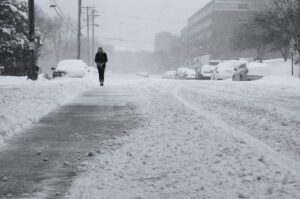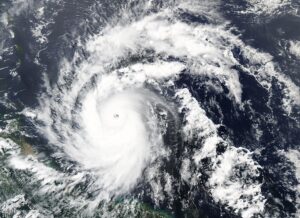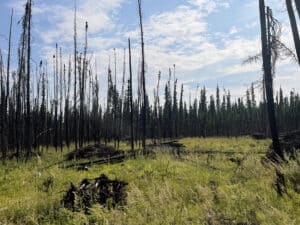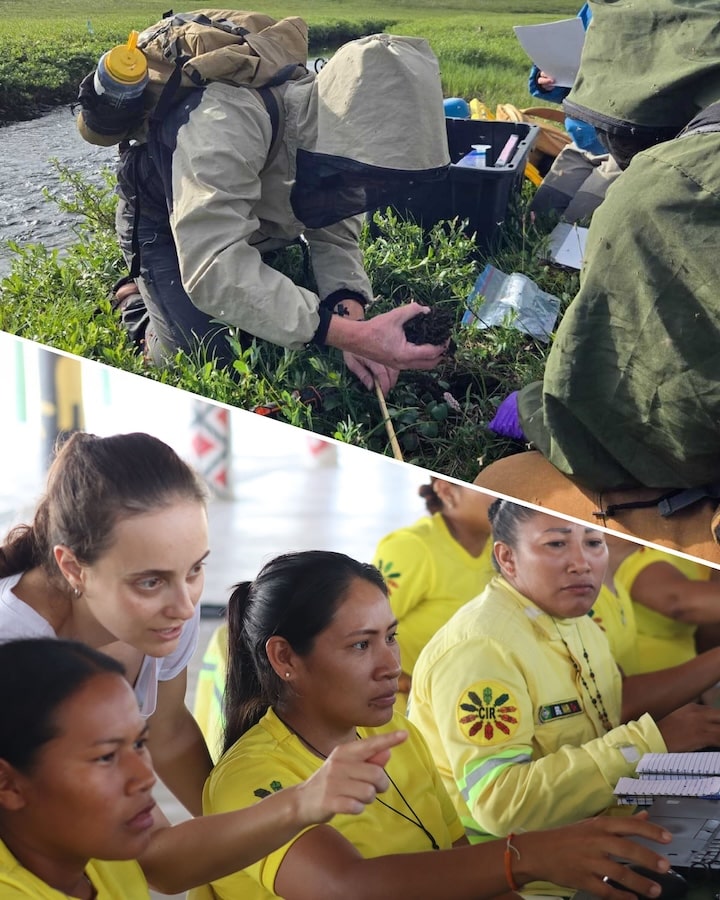Why more frequent cold blasts could be coming from global warming

Frigid air that normally stays trapped in the Arctic has escaped, plunging deep into the United States for an extended visit that is expected to provoke teeth-chattering but not be record-shattering.
It’s a cold air outbreak that some experts say is happening more frequently, and paradoxically, because of a warming world. Such cold air blasts have become known as the polar vortex. It’s a long-established weather term that’s become mainstream as its technical meaning changed a bit on the way.
A year of extreme weather that challenged billions

Climate change has brought record-breaking heat this year, and with it extreme weather, from hurricanes to month-long droughts.
This year is expected to be the hottest on record, and new research shows that people around the world experienced an additional 41 days of dangerous heat due to climate change.
Researchers from the World Weather Attribution (WWA) group at Imperial College and Climate Central said the study shows “we are living in a dangerous new era”.
From Brazil to Indonesia we take a look back at the climate events that affected the lives of billions in 2024.
Communicating science
Scientific research is essential to almost all aspects of life- yet we’re in an age when scientists and their findings are met with contempt, distrust and even anger. We hear how this impacts scientists professionally and personally, and discuss strategies for repairing the relationship between science and the public.
With us:
Anne Toomey, associate professor of environmental studies and science at Pace University. She’s the author of the new book Science with Impact- How to Engage People, Change Practice, and Influence Policy
Heather Goldstone, Chief Communications Officer at Woodwell Climate Research Center
Chris Gloninger, Senior Climate Scientist at the Woods Hole Group.
Explore these 15 maps by award-winning Woodwell Climate cartographers Greg Fiske and Christina Shintani. Created in 2024, each tells a story about the immense beauty of the high north, the dramatic changes unfolding as the Arctic continues to warm three to four times faster than the rest of the world, and the equitable solutions being developed to address climate impacts in the region
Read More on Permafrost Pathways.
The impacts of climate change on the frequency and severity of physical hazards are putting many communities at risk. As the threat of climate change grows, so too does the need for accessible information, tools, and expertise to support climate-resilient decision making across multiple scales, from communities to countries. Woodwell Climate Research Center believes there is a need to localize and customize climate risk assessments. This information is critical for local government leaders as they make planning decisions, but it is not available to all communities. Woodwell believes that this science should be freely and widely available. To address this gap, Woodwell works with communities across the world, including Chicopee, MA, to provide community climate risk assessments, free of charge.
The impacts of climate change on the frequency and severity of physical hazards are putting many communities at risk. As the threat of climate change grows, so too does the need for accessible information, tools, and expertise to support climate-resilient decision making across multiple scales, from communities to countries. Woodwell Climate Research Center believes there is a need to localize and customize climate risk assessments. This information is critical for local government leaders as they make planning decisions, but it is not available to all communities. Woodwell believes that this science should be freely and widely available. To address this gap, Woodwell works with communities across the world, including Barnstable, MA, to provide community climate risk assessments, free of charge.
A new study, published in Environmental Research: Climate and co-authored by Senior Scientist Dr. Jen Francis at Woodwell Climate Research Center, finds that despite abnormal warmth globally, and especially in the Arctic, severe winter cold-air outbreaks will continue, and perhaps become more frequent across the Northern Hemisphere.
“Even though the globe is warming and cold records are falling less often, we are still seeing surprisingly severe cold spells that sometimes last for many days and invade regions unaccustomed to severe cold,” said Dr. Francis. “It seems really counterintuitive, but there will be plenty of ice, snow, and frigid air in the Arctic winter for decades to come, and that cold can be displaced southward into heavily populated regions by Arctic heat waves.”
“In this comprehensive review of recent literature augmented with new analysis, we find the ongoing warming of the Arctic may provide an explanation,” added study lead-author Dr. Edward Hanna.
The stratospheric polar vortex is a mass of cold whirling air that forms high above the Arctic surface in response to the large north/south temperature difference that develops during winter. During recent warm winters with a relatively warmer Arctic, however, this vortex has tended to weaken, which can disrupt the normal flow of the jet stream below it (a river of wind above northern midlatitudes) and lead to conditions called ‘blocking’, which in turn allow pockets of cold Arctic air to plunge much farther south than normal.
This review provides a new analysis of recent research that offers further clarity around these complicated interactions. According to study co-author Dr. Muyin Wang, “An improved understanding of Arctic-midlatitude climate linkages is likely to benefit seasonal prediction and extreme weather preparedness, as well as the understanding of climate change.”
Researchers also underscore the need for urgent action to address the climate crisis, and mitigate and adapt to the consequences of increasingly extreme weather. “The Arctic may seem irrelevant and far away to most folks, but our findings show that the profound changes there affect billions of people around the Northern Hemisphere,” said Dr. Francis. “To reverse these trends, and better protect our communities and our planet, we must take bold and rapid action now to reduce the burning of fossil fuels and the build-up of heat-trapping gases in the atmosphere. The tools to achieve this exist if we can muster the will.”
The study resulted from an international workshop held in Lincoln, UK, in 2023, and was supported by the International Arctic Science Committee, the World Climate Research Programme’s Climate & Cryosphere project and the University of Lincoln. The full text can be read here.
The state of the Arctic: High temperatures, melting ice, fires and unprecedented emissions
The Arctic tundra has switched from a carbon sink to a source of emissions, according to a NOAA report.

The Arctic just experienced its second-hottest year on record. And concerningly, the region’s tundra has transitioned from being a sink for carbon to a source of emissions as permafrost thaws, releasing carbon dioxide and methane.
That will only amplify the amount of heat-trapping gases that enter the atmosphere, paving the way for further warming.




